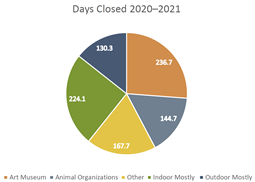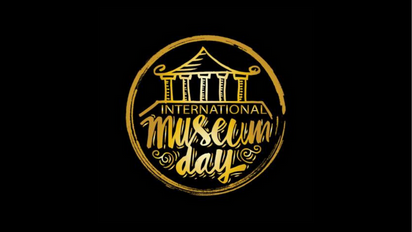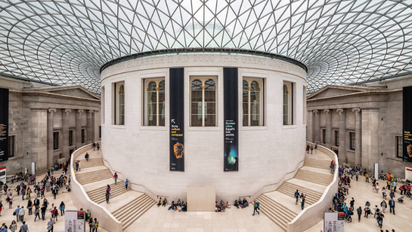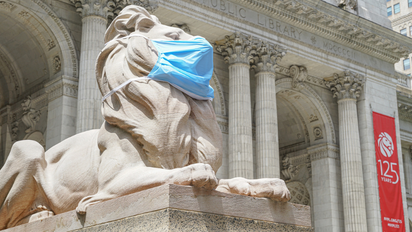The Latest
Given COVID-19 completely changed the game for arts and cultural institutions, The Lukens Company (TLC) recently conducted an informal survey to gauge how these organizations were impacted, what they did to cope with closures, and ways in which the pandemic continues to influence their membership programs.
Surveys were distributed to a variety of arts and cultural institutions across the country, including art museums, science museums, zoos, and aquariums.
Going into the survey, we knew that indoor institutions were hit particularly hard this past year. So in addition to trying to gain a deeper understanding of the severity of the situation, we wanted to unearth how extended closures and the decline in on-site visitors impacted their operations.
Here’s what we found.
How arts and cultural institutions were impacted by COVID-19
Arts and cultural institutions were impacted by COVID-19 in three main ways:

- Closures: On average, arts and cultural institutions surveyed were closed a total of 197 days. Art museums were hit the hardest, closing their doors for an average of 237 days. On the other end of the spectrum, we have outdoor institutions such as zoos, which were able to reopen their doors much sooner than others, on average resuming on-site visits after 130 days.
- Membership file size: Not only were ticket sales lower than any other time in most organizations’ history, nearly all organizations reported that they had a substantial drop in their membership file size—some as much as 56%. Art museums were impacted the most in this realm as well, averaging a 34% decrease in their membership file size. And once again, outdoor organizations were the least affected, on average only experiencing a 3% membership file size drop.
- Staff: Closures and shrinking membership files had a direct impact on revenue and budgets. As a result, membership and development departments were cut. In fact, 75% of survey participants had staff decreases that still haven’t been replaced. This includes both on-site and seasonal staff members.
In spite of all this, many arts and cultural institutions reported that their 2020 annual fund campaigns were the strongest on record in recent years, a testament to their robust recovery tactics and understanding supporters who graciously donated while they too were dealing with the pandemic. To continue fostering strong bonds with supporters, organizations should keep using the same tone and messaging throughout most member communications given they’re still proving to be effective.
How arts and cultural institutions coped with COVID-19
Overall, we saw organizations cope with COVID-19 in four ways:
- Testing: The majority of organizations decreased their testing in acquisition/reactivation and renewal campaigns. With COVID-19 causing industry-wide labor shortages and production cost increases, many organizations instead maximized their spend on proven control packages and campaign methods to smaller targeted audiences.
- Membership extensions: While many organizations initially offered membership extensions at the beginning of the pandemic, many have since halted them. Additionally, at least 25% of survey participants wouldn’t offer extensions again given how long closures ended up lasting.
- Incentive offers: About 38% of organizations revised their membership incentive offers due to institutional changes and the need to increase response. This includes everything from reducing in-person events to increasing dollar discounts for campaigns.
- External lists: Most organizations paused external list outreach during closures, though many are now reengaging with tried-and-true lists for their 2021 and 2022 campaigns.
Almost all survey participants found innovative ways to keep members involved, attract new audiences, and maintain community involvement. And these new tactics are here to stay, as almost all organizations plan to continue utilizing them for their future programs. From hosting virtual events to increasing digital outreach, strategies that began out of necessity morphed into new avenues to grow and expand accessibility.
How arts and cultural institutions are adapting to ensure a successful future
The following are our findings and recommendations to help set arts and cultural institutions up for success now and in the future, particularly in terms of engaging with members, building community support, and increasing membership conversions.
KEEPING MEMBERS INVOLVED
From museums to zoos, keeping the attention of members and visitors was critical throughout the pandemic. We found that many of the arts and cultural institutions we surveyed quickly adapted and implemented digital ways to keep members engaged and remain an important part of their communities. This included transitioning in-person events and programs to an online platform, encouraging online ticket purchases, and providing new virtual experiences.
The majority of those surveyed reported that they plan to continue their increased virtual options even as COVID-19 restrictions ease, as these offerings have expanded their reach and provided more flexibility for their supporters to engage with them.
SHIFTING MEMBERSHIP RENEWAL STRATEGIES
In addition to offering member-specific programming and other incentives, membership drives and renewal strategies had to be adapted. Many organizations tailored their communications based on previous tenure—philanthropic versus transactional. They also increased communications via email, texting, voice broadcast, and social channels to both members and recently lapsed members. The communication timeline was extended for lapsed segments as well with both earlier and later touchpoints. All of this contributed to successful membership renewals of the most dedicated supporters, and many organizations will continue to implement these tactics in future efforts.
CONVERTING MORE ONLINE TICKET BUYERS TO MEMBERS
Arts and cultural institutions reported a surge in online ticket sales, as many organizations required visitors to go online to purchase tickets for both in-person visits and virtual events. With increased online ticket sales—particularly for first time non-members—membership acquisition strategies had to adjust to optimize growing email lists and convert more online ticket buyers to members. We’ve found that most successful digital membership acquisition programs entail a combination of utilizing email, digital advertising, and websites. Here are nine recommendations for a successful digital membership acquisition program.
When it comes to email, there are three key components to consider for your strategy:
- Testing: Given testing is a critical part of email marketing success, try out different subject lines, copy, and offers as your campaigns develop.
- Welcome Series: Deploy a Welcome Series that ends with asking the ticket buyer to become a member.
- Digital surveys: After a ticket buyer’s visit, send out a digital survey that enables them to rate their experience and use their ticket cost towards a membership.
Digital advertising is an essential tool to increase your audience’s awareness of your membership and all its perks. Some strategies that can help you do so are:
- Geo-targeting: Geo-target ticket buyers while they’re still on-site with digital ads to apply their ticket cost towards a membership.
- Digital ads: Run social, search, and display ad campaigns to increase awareness and instill a sense of urgency.
- New channels: Expand your reach by testing your campaigns on new channels such as Pandora, Nextdoor, and Hulu.
Once a visitor is on your website, make your membership opportunity irresistible by featuring membership perks and special offers. These can include:
- Online premiums: Consider online premiums such as virtual exclusives for online membership and downloadable content like meeting backgrounds and e-guides.
- Lightbox: Include a lightbox pop-up on your purchase page to offer ticket buyers the opportunity to convert their ticket into an annual membership.
- Online-exclusive incentives: Offer online-only incentives for membership that includes a sense of urgency.
We’ll undoubtedly see more changes and developments as arts and cultural institutions find their new normal and resultingly increase traction in their digital membership programs. But the most important thing to note is that as your online membership acquisition strategy develops, continue testing everything. By tracking as much data as possible, you’ll be able to optimize as your campaign’s progress and continue honing your digital strategy.
Looking for more information?
TLC can work with you to develop an effective roadmap for your membership goals, whether that be enhancing your email strategy or exploring new channels like Nextdoor, Pandora, and Hulu. If your organization has questions about our 2021 Arts & Culture Survey or would like to discuss your membership strategy, contact us at info@thelukenscompany.com.





